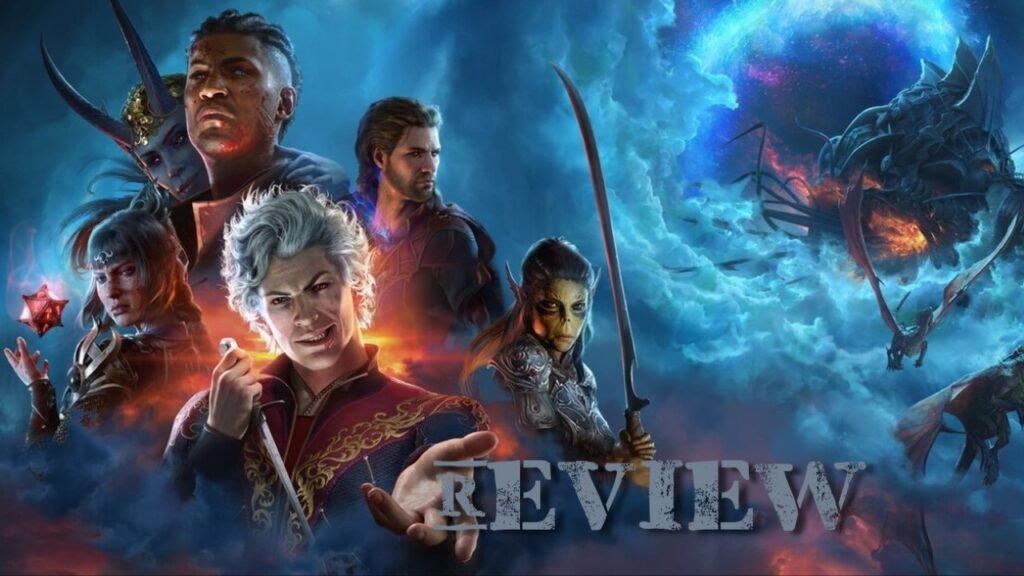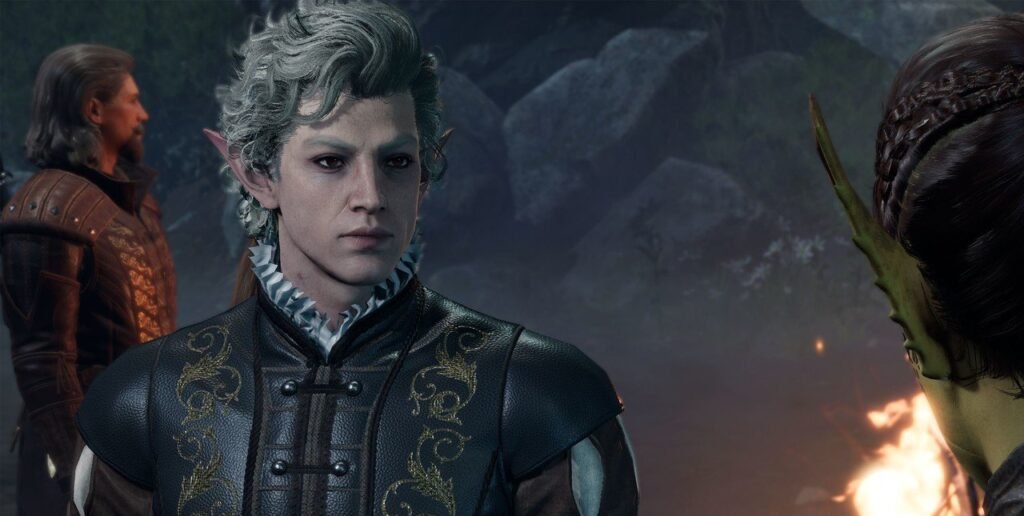
Every once in a long while, a game comes along that is so memorable, exciting, fresh, and well-written that it sets a new standard for an entire genre. Baldur’s Gate 3 is such an achievement for the tabletop role-playing-inspired, swords-and-sorcery adventuring genre that its Bioware-made predecessors helped popularize decades ago. Larian Studios has transformed the world of Dungeons & Dragons’ Forgotten Realms into a beautiful, detailed landscape filled with countless fully realized, powerfully written, and skillfully voiced characters.
There are heart-wrenching choices to be made, alliances to be forged, bears to be romanced, and a vast variety of interesting, challenging turn-based combat encounters. I didn’t just enjoy my 130-plus hours on this journey—I fell in love with it.
One of the challenges video games have faced when adapting the experience of playing Dungeons & Dragons on the tabletop is capturing the same level of freedom and imagination players enjoy when solving problems with real-world logic. While no video game will ever fully replicate that level of flexibility, Baldur’s Gate 3 is a big step forward from what we’ve seen in games like Skyrim or Dragon Age. If something looks flammable, you can probably set it on fire with a spell. If you want to save on lockpicks, most doors can be hacked down with a big enough axe. Secret areas that other games would block off with invisible walls can be accessed by jumping and climbing. I once skipped a huge boss fight by challenging a large zombie to a drinking contest and, thanks to my high Constitution score, convinced him to drink himself to death while I continued celebrating. The world rarely tells you no if you’re willing to test its boundaries.
And you can even bring up to three friends along for a seamless co-op experience. It only gets better (and funnier) when you realize you can have one person distract a guard while the other steals everything not nailed down behind their back.
There’s an immense amount of freedom in the character creation process as well. The character creator is one of the best I’ve seen in years, featuring 29 subraces with unique abilities and models (including a variety of Dragonborn). Each of the 12 classes offers at least three specializations that play quite differently, with wizards and clerics receiving even more options to choose from.
The attention to detail in the art direction is exceptional, especially in the designs of humanoid enemies and their outfits. The variety of expressive faces and the impressive performance capture breathe life into every character. Larian’s incredible attention to detail extends to the world-building and writing as well.
This is exemplified by Baldur’s Gate itself, a hub full of life and adventure that constantly amazed me, even after 90 hours of play. Almost every citizen has something to say about the unfolding events, and thorough exploration is rewarded with new lore, new loot, and new quests. It’s astounding how much voice acting Larian has packed into the streets, and how good nearly all of it is. Even the random citizens have performances that feel as enthusiastic and professional as the main cast, and they rarely sound too similar to each other. I suspect many of the voice actors are responsible for more than one of these bit parts, but it’s impossible to tell just by listening—something that can’t always be said about other open-world games.
Among the standout characters are your companions, a diverse and layered group of individuals who grow, regress, and reveal new depths over the course of the game. From the cheerful tiefling Karlak, with her demonic heart, to the brooding cleric Shadowheart, the arrogant wizard Gale, and the stoic Halcyon—who can transform into a grizzly bear—each companion has a rich backstory and the potential to significantly change based on your decisions.
The main villains are just as richly written, each with complex motives and their own unique brand of malice, which introduces new, escalating threats in the final third of the epic adventure. When it comes time for battle, Baldur’s Gate 3 never fails to impress with the thoughtfulness and creativity of its encounter design. Each battle feels like it’s carefully crafted to make you want to scream at the dungeon master in the best possible way.
One particularly memorable encounter involved teleporting imp creatures who would garrote my party members and then cart them off to separate locations, preventing spellcasting and forcing everyone to fend for themselves. Another featured terrifying insectoids that petrified everyone with fear, requiring me to find a way to win while unable to move. At no point did I fall back on a repetitive grinding routine. You have to think on your feet, or you die and reload your last save.
The combat can feel unforgiving at first, particularly during the first few levels, when characters are fragile and vulnerable. This difficulty is largely a product of how closely Baldur’s Gate 3 adheres to the rules of 5th Edition D&D, and while Larian didn’t try to adjust this long-standing issue from the tabletop game, they do provide opportunities to outsmart the system or avoid combat entirely if you’re clever.
Once my party gained a few levels and some magical items, however, I was happily blasting, slashing, and shooting my way through fights, making use of all the versatile abilities and environmental interactions at my disposal. The story unfolds across three acts, each taking around 40 hours to complete for an obsessive completionist like me, with a wealth of side objectives to tackle along the way.

Each act in Baldur’s Gate 3 has a distinct vibe and look: Act 1 presents a pastoral wilderness, Act 2 is the spooky part, and Act 3 treats us to dense urban adventuring. While it can feel a bit slow at times—especially in Act 1, where I spent a lot of time chasing down different leads to solve the same problem, and Act 2 raises more questions than it answers—there’s always something to keep you engaged. Discovering exciting new areas, strong side quest writing, and fun combat encounters ensured that I never lost motivation.
What’s truly amazing about Baldur’s Gate 3, though, isn’t just its size, even though much has been made of its scope. Honestly, I wouldn’t have minded if it were half as long. The real magic lies in how almost none of it feels like filler, no matter how far you stray from the main quest.
Every random house I wandered into or side quest I picked up rewarded me with a memorable, unique, hand-crafted roleplaying experience. Even a random note found on the body of a bandit might tell a heartbreaking story about their past, adding weight to every decision to fight and kill. While the first two acts offer plenty of difficult choices, the big decisions I had to make in Act 3 before committing to my final course of action are a work of devilish genius.
Without spoiling anything, I’ll say that realizing my enemies were many steps ahead of me by the time I reached the city was heartbreaking, but I still felt empowered by the opportunities that remained to alter my own destiny and assemble an impressive coalition of allies. Even more gratifying was how the final stretch of the game often called back to things I had done or characters I had saved—sometimes as much as 80 hours earlier—which tied the entire story together and made the world feel even more cohesive and authentic. This is not a story that assumes you are a hero; it challenges you to prove it, if that’s what you’re truly made of.
The lead-up to the finale backed me into a corner with a dozen different ways out, each one requiring a compromise on my beliefs. This elevated both the tension and the storytelling to new heights, which is impressive given how strong the narrative had been up until that point. There were quests that made me cry, quests that made me shout in surprise, and quests that genuinely creeped me out. The variations in not only the ending but also in so many smaller stories have me eager to play through it all again.
And that’s really saying something, given that Baldur’s Gate 3 has been my full-time job for the last three weeks.
It does deserve some criticism for a few mild to moderate bugs here and there. Nothing game-breaking, but enough to be annoying. There were also performance issues in Act 3 that forced me to lower my settings, even with an RTX 3080. However, many of the worst offenders have already been addressed through four hotfixes since launch, and what remains feels almost trivial compared to the greatness of everything else. A game this complex will always have its share of bugs, especially at launch, but what I experienced was more than an acceptable trade-off.
I wouldn’t say that every CRPG going forward should aspire to be like Baldur’s Gate 3. Not every game needs to be this big, ambitious, or dense. But it is a landmark moment in the genre, and if I had to point to one paragon that I’d want everyone else making CRPGs to take inspiration from, this is absolutely it.
I waited 14 years for the stars to align again and deliver the ideal mix of crunchy, tactical, old-school RPG combat, an epic and well-written story with complex characters and meaningful choices, and a level of polish and cinematic presentation that lets you see the sweat and sorrow on characters’ faces in their darkest moments. Plenty of other games have partially completed that list in the meantime, but the last time all of these elements came together this perfectly was Dragon Age: Origins in 2009.